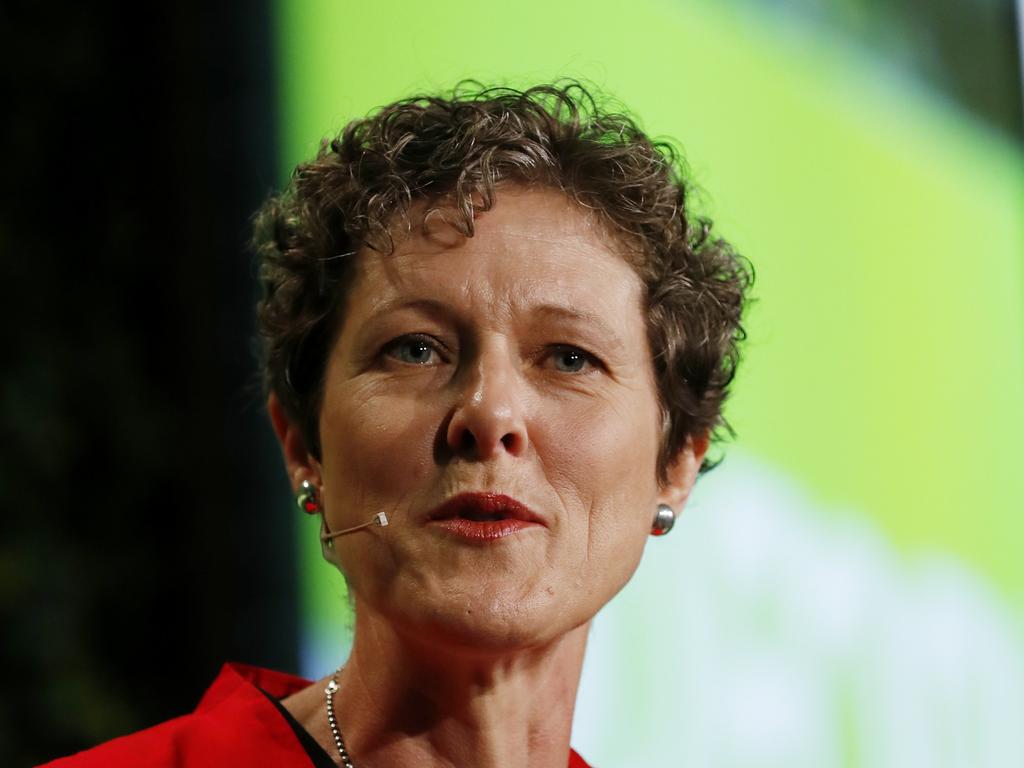Treasury chief’s budget defcit warning
Treasury secretary Steven Kennedy has endorsed years of massive budget deficits, calling for the government to ‘sensibly taper’ spending but delay more aggressive budget repair.

Treasury secretary Steven Kennedy has endorsed years of massive budget deficits, calling for the government to “sensibly taper” spending but delay more aggressive budget repair to allow the Reserve Bank to “normalise” monetary policy while pursuing full employment.
“This unusual episode of macroeconomic policy is now coming to an end,” Dr Kennedy told a Senate estimates committee hearing on Wednesday. “The fiscal policy impulse is receding, reflecting the temporary and targeted nature of the policy response.”
Dr Kennedy said after $337bn in direct government support through the health crisis, emergency spending was no longer required. He noted the RBA had also ended its extraordinary bond-buying programs.
“Despite these early steps towards normalisation, macroeconomic policy settings are still far from usual,” he said. “Interest rates are still close to zero and are expected to remain historically low for some time. It will not be until we see interest rates rise back toward more usual levels that the risks associated with very low interest rates abate.”
Dr Kennedy warned a more abrupt turn towards austerity could force the RBA to hold rates lower to cushion the fiscal drag on the economy. “In these circumstances, it is important that the withdrawal of fiscal policy support is tapered, as it currently is, to ensure that monetary policy has an opportunity to normalise,” he said.
“However, there is an even more compelling reason for fiscal support to sensibly taper, and that is the opportunity to achieve full employment.”
The RBA has forecast the jobless rate will reach 3.75 per cent by the end of this year.
Dr Kennedy said policymakers needed to approach these lower levels of unemployment cautiously, but the country should “test these boundaries”, even as he flagged the potential for a wages outbreak as the jobless rates declined towards 50-year lows.
He said “over-estimating the NAIRU (the level of unemployment below which inflation would be expected to accelerate) could see policy tighten prematurely and prevent Australia from attaining the goal of full employment”.
“A further consideration is the likely nonlinear relationship between wages (or inflation) and unemployment. That is, there may be little trade-off between wages and unemployment until we hit an inflection point, at which point wages growth increases more rapidly with further falls in unemployment. This suggests we should approach low levels of unemployment steadily, but it certainly does not outweigh the argument for persistently testing these boundaries.”
On the other hand, Dr Kennedy said continuing to run very loose fiscal settings ran the risk of overstimulating the economy. That could force the central bank to lift rates more quickly, which “raised the risk of a (monetary) policy error”, he said.
Economists said getting the right balance between withdrawing fiscal and monetary support would be difficult. Warren Hogan said the “big risk” was that too much of the job of cooling the economy was put on monetary policy and could force the RBA to hike rates “not just to the neutral setting of 2 or 3 per cent, but take it to a restrictive setting which is highly damaging for a highly indebted economy”.
S&P country analyst Anthony Walker said the federal fiscal strategy had moved from pushing the unemployment rate below pre-pandemic levels of about 5 per cent, to ensuring the “economic recovery is sustainable”.
He said the government would be able to bank the budget boost from a stronger-than-anticipated economic performance.








To join the conversation, please log in. Don't have an account? Register
Join the conversation, you are commenting as Logout